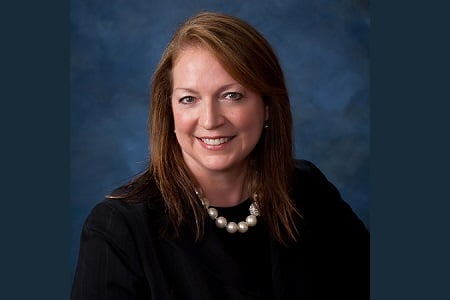

As Florida picks up the pieces from Hurricane Michael, it’s worth noting that many homeowners in the United States are still not interested in taking concrete actions to protect their properties.
A recent poll by the Private Risk Management Association (PRMA) revealed that less than 20% of high net worth clients purchased a new primary flood insurance policy, an insight shared by nine in 10 brokers.
Aside from the cost of flood insurance policies, it is surprising that many homeowners still have the “It’s not going to happen to me” mindset, which gives them a false sense of security. For PRMA executive director Lisa Lindsay (pictured), this reflects the need for brokers to educate homeowners about disasters and the risks they bring to properties.
Insurance Business reached out to Lindsay to learn more.
IB: Despite flood risks, why do some people opt not to purchase new and excess flood insurance policies?
Lindsay: Homeowners opt out of buying flood insurance for a number of reasons. In a recent PRMA broker survey, we found that many homeowners believe flood coverage is too expensive or have a mindset that “It’s just not going to happen to me.” This belief is prevalent despite widespread flooding that has occurred in recent years in areas that have never flooded before. They may also assume that flood insurance is covered under a standard homeowners’ policy, or if their bank doesn’t require it, they don’t need it. This is a big misconception. Banks do not predict the weather.
Homeowners must avoid putting stock in information from organizations that cannot accurately determine their risk, and they must stop relying solely on FEMA flood maps. According to Albert Slap, president of Coastal Risk Consulting in Plantation, FL, “There are millions of older homes in the US that were built prior to the adoption of FEMA flood insurance rate maps. These older homes were built at lower elevations and have higher flood risks. Also, areas in the hurricane storm surge zones on the coasts are at higher risk.”
In the PRMA survey, 45% of 130 brokers said cost was the primary reason clients do not purchase excess flood insurance, followed by the “It’s not going to happen to me” mindset (29%) and the lack of education and understanding (26%).
IB: What can brokers do to raise awareness amongst clients about the importance of flood insurance policies?
Lindsay: It all starts with education. PRMA was founded on the premise of education, so we have an obligation to educate our members about the emerging trends and threats their clients face. We encourage them to discuss these potential threats with clients/homeowners and educate them about the real risks.
These risks could include everything from weather-related events to the impacts of climate change. New tools and data are available to help clients make informed decisions. Once the risk has been accurately assessed, the education needs to continue and the misconceptions that flood insurance is too expensive and not necessarily needed should be discussed.
For those who live in the higher-risk zones, the average flood policy through the NFIP costs, on average, $700 a year. Considering one event could cost a homeowner more than $35,000 in damage, the cost is well worth it. Last year’s hurricanes were driven by extreme rain and flooding and caused billions of dollars in damage. Some homeowners may also find flood policies available outside of the NFIP program offer broader coverage at affordable premiums.
IB: Do you think it is necessary for brokers to break their clients’ false sense of security?
Lindsay: Yes, we absolutely believe that brokers must take the lead in educating clients about the real risk(s) they face. Helping clients make informed decisions is one of the most important things we do as professionals. PRMA has an obligation to educate members and encourage them to have tough conversations that better prepare and better serve their clients.
IB: How can they go about this without being too pushy?
Lindsay: Education. In my over 30 years as a HNW insurance specialist, I have never met a client who was opposed to being educated so they can make informed decision. I think insurance professionals are sometimes perceived as pushy when they don’t take the time to educate and bring value to the conversation.
IB: Are there specific geographies and types of homes that are more prone to these flood risks?
Lindsay: That’s a complicated question but I am going to be bold and change the historical narrative – No. While there may be geographies and types of homes that are more prone to flood risk due to location, historical events and trends, the reality is flooding is happening everywhere. Coastal storm surge, slow moving weather systems that are dumping massive amounts of rain on areas that would otherwise be dry, changes in topography caused by development, wildfires and aging infrastructures are all having an impact on the broad frequency of flooding events. It’s no longer, “if a flood happens,” it’s “when.”
IB: If clients decide not to purchase a flood insurance policy, what can they do to protect themselves?
Lindsay: There are a number of risk mitigation measures that a homeowner can implement to prevent or reduce loss due to flooding. These techniques can be as simple as raising mechanical equipment in a basement, to putting up inflatable barriers if there are rising waters or if storm surge is expected. The main message we are trying to get across to clients is – insurance is not your only option. There are products and service providers available to help you reduce your chance of loss.
IB: What essential coverage should a robust flood insurance policy have?
Lindsay: To name just a few, a robust flood insurance policy should have coverage for items in a finished basement, adequate limits for additional living expenses, and replacement cost for damaged property. Many of these coverages are excluded or limited in an NFIP policy.
